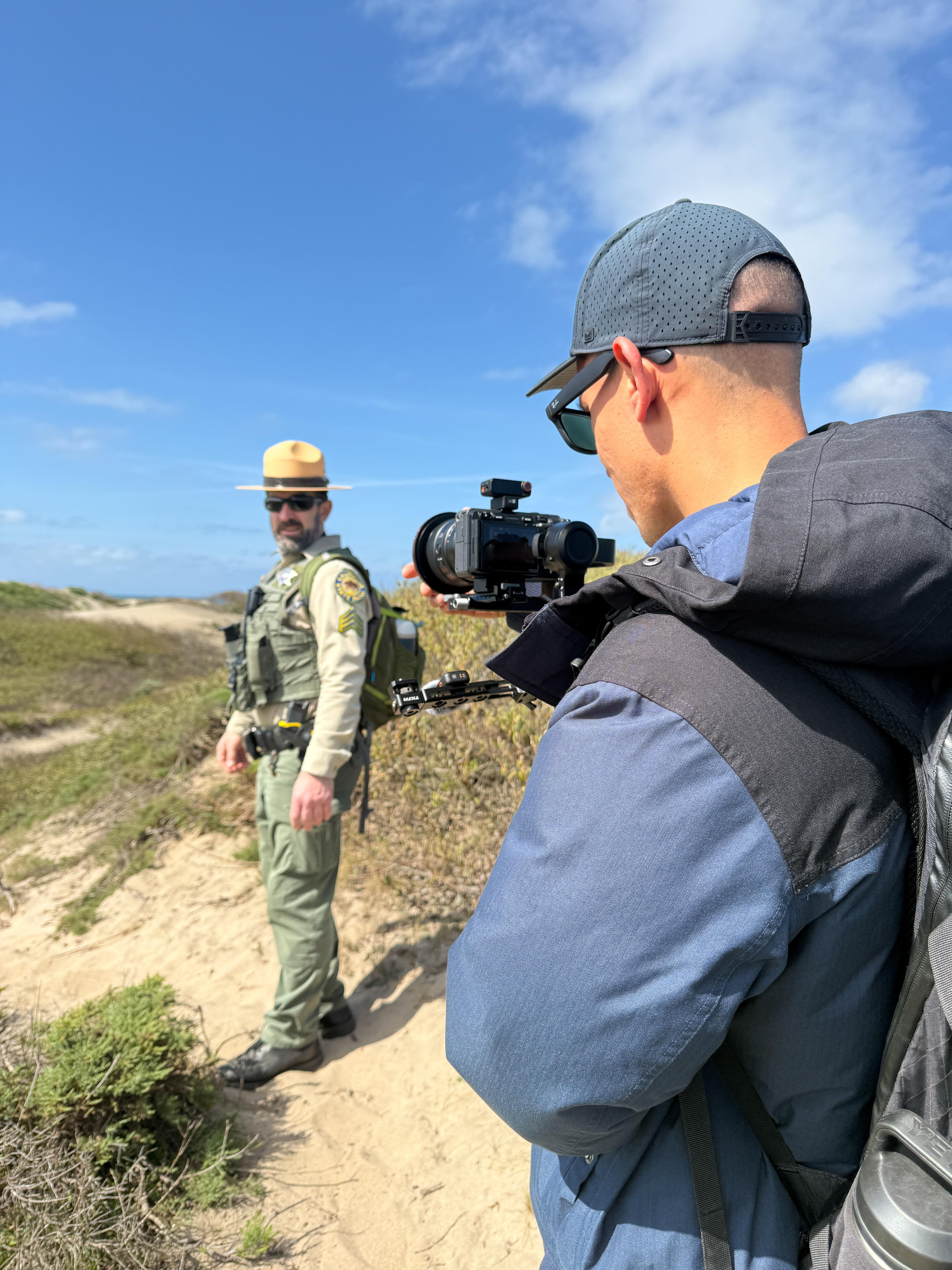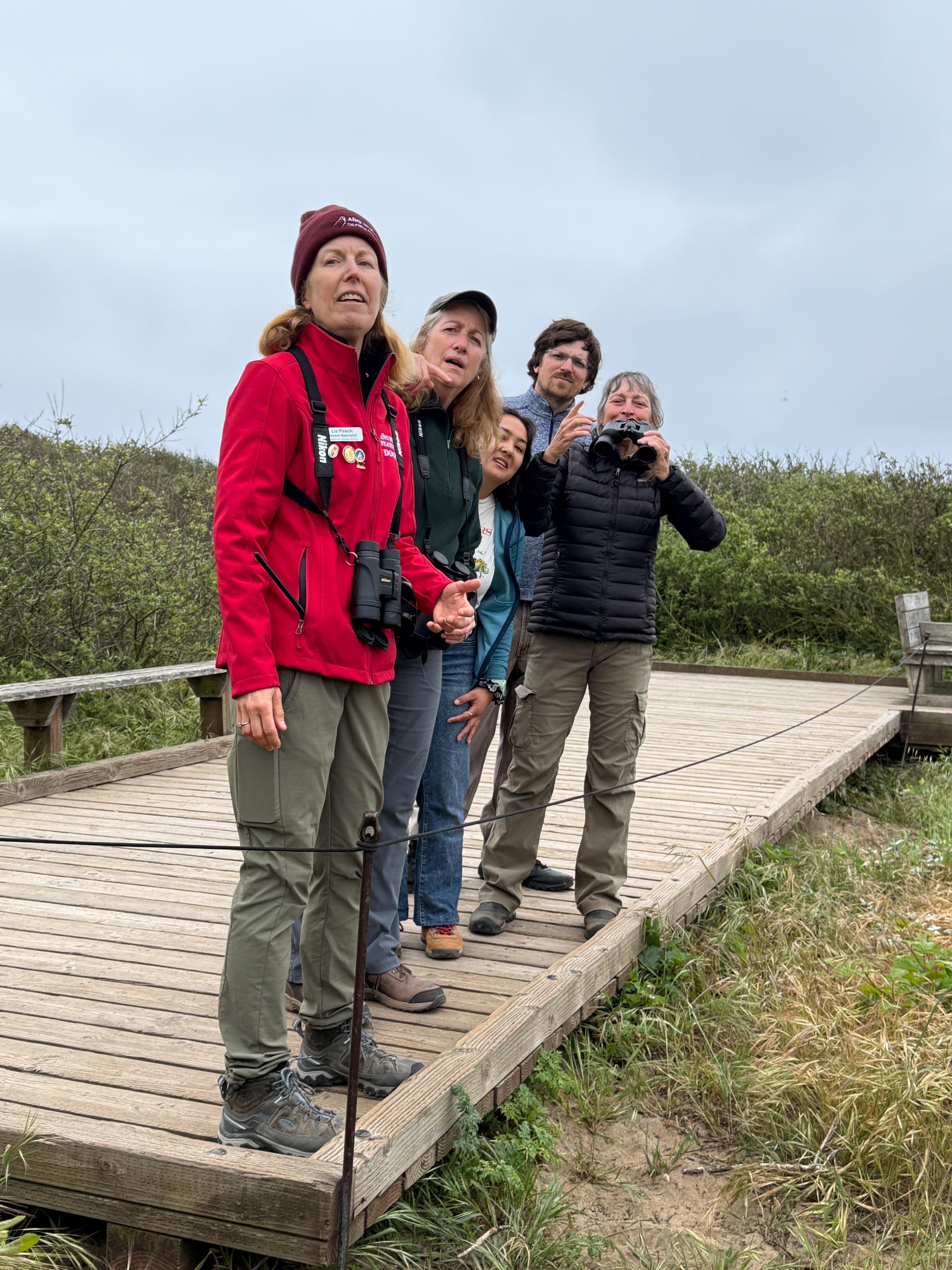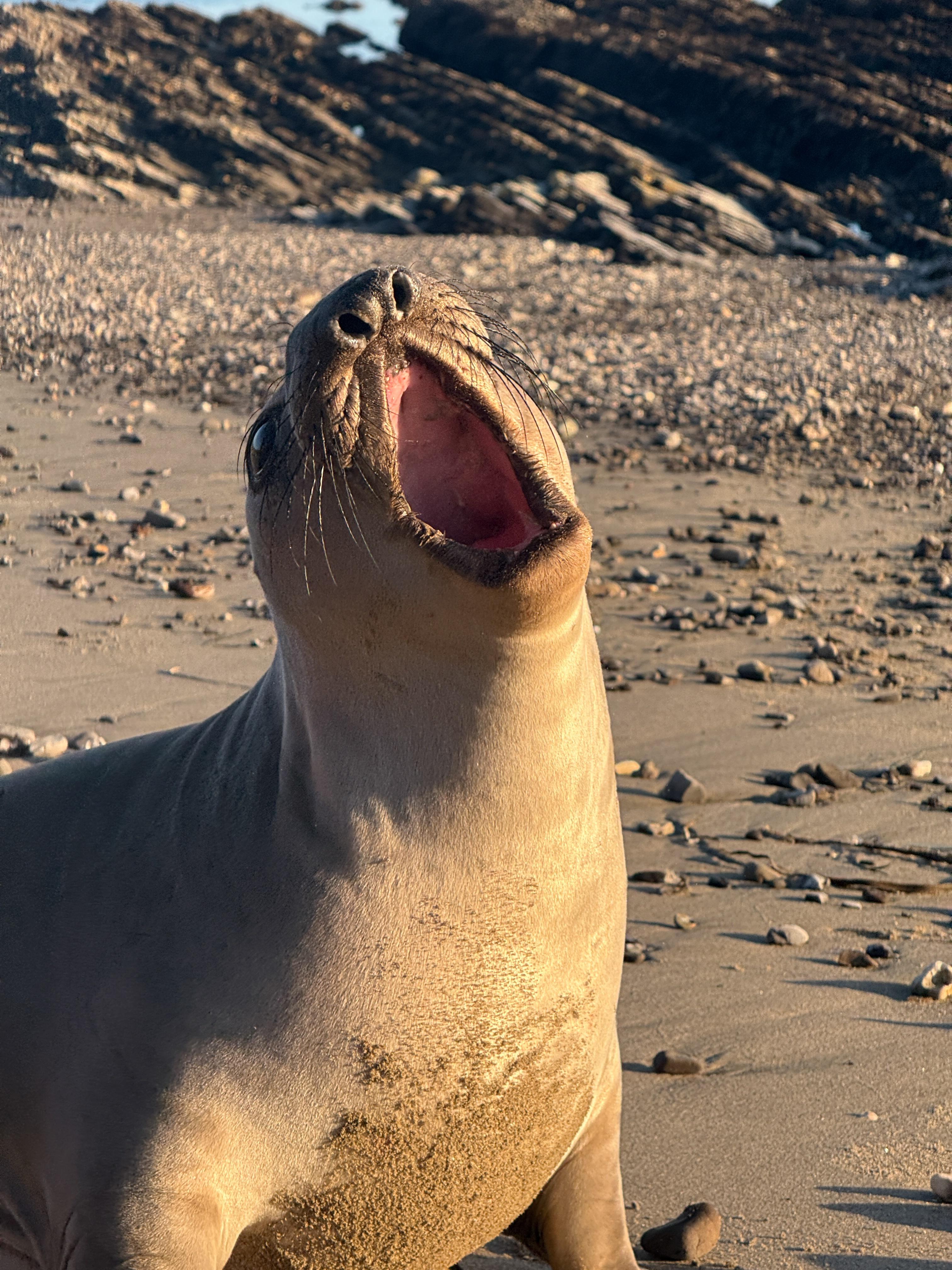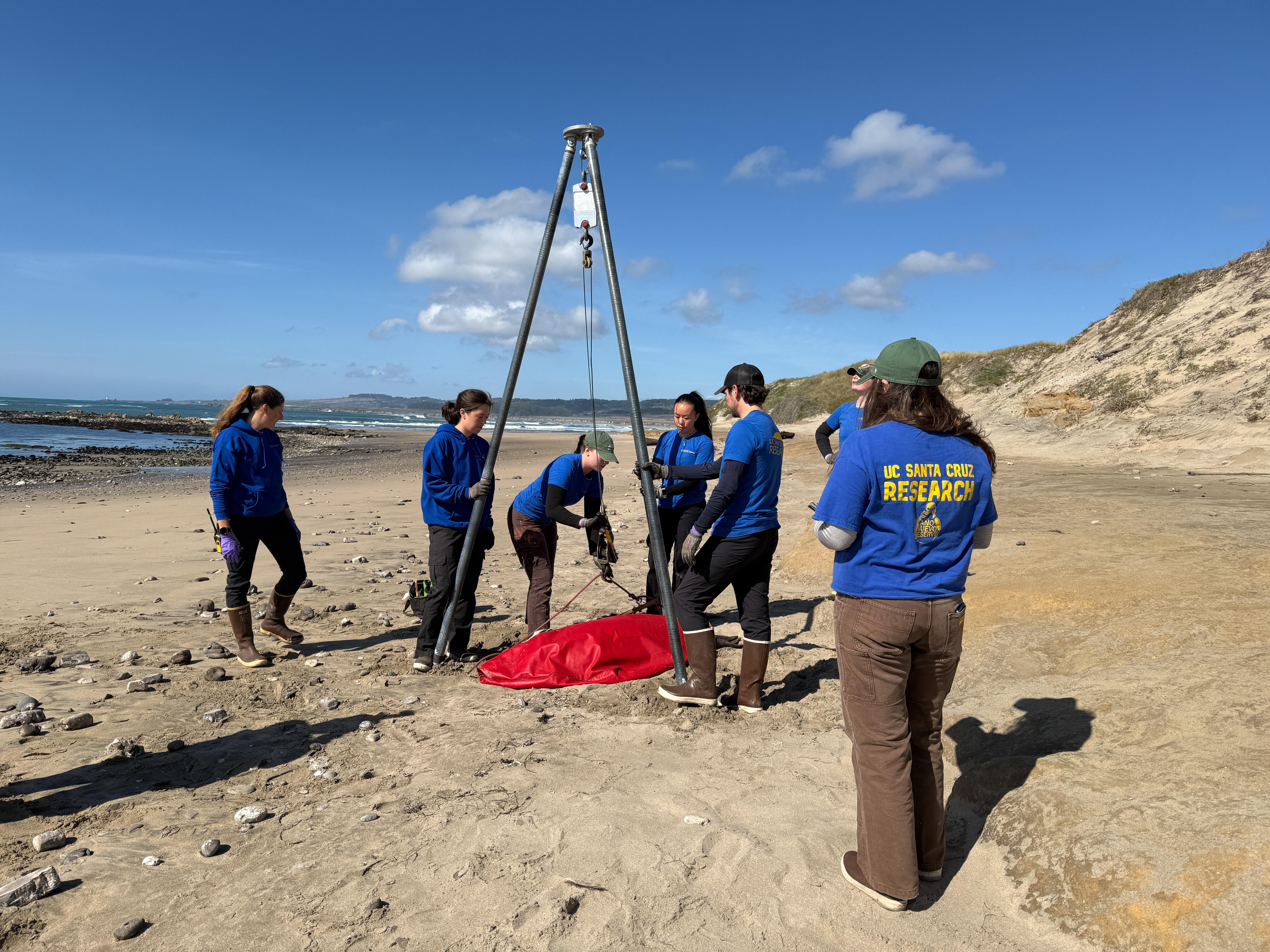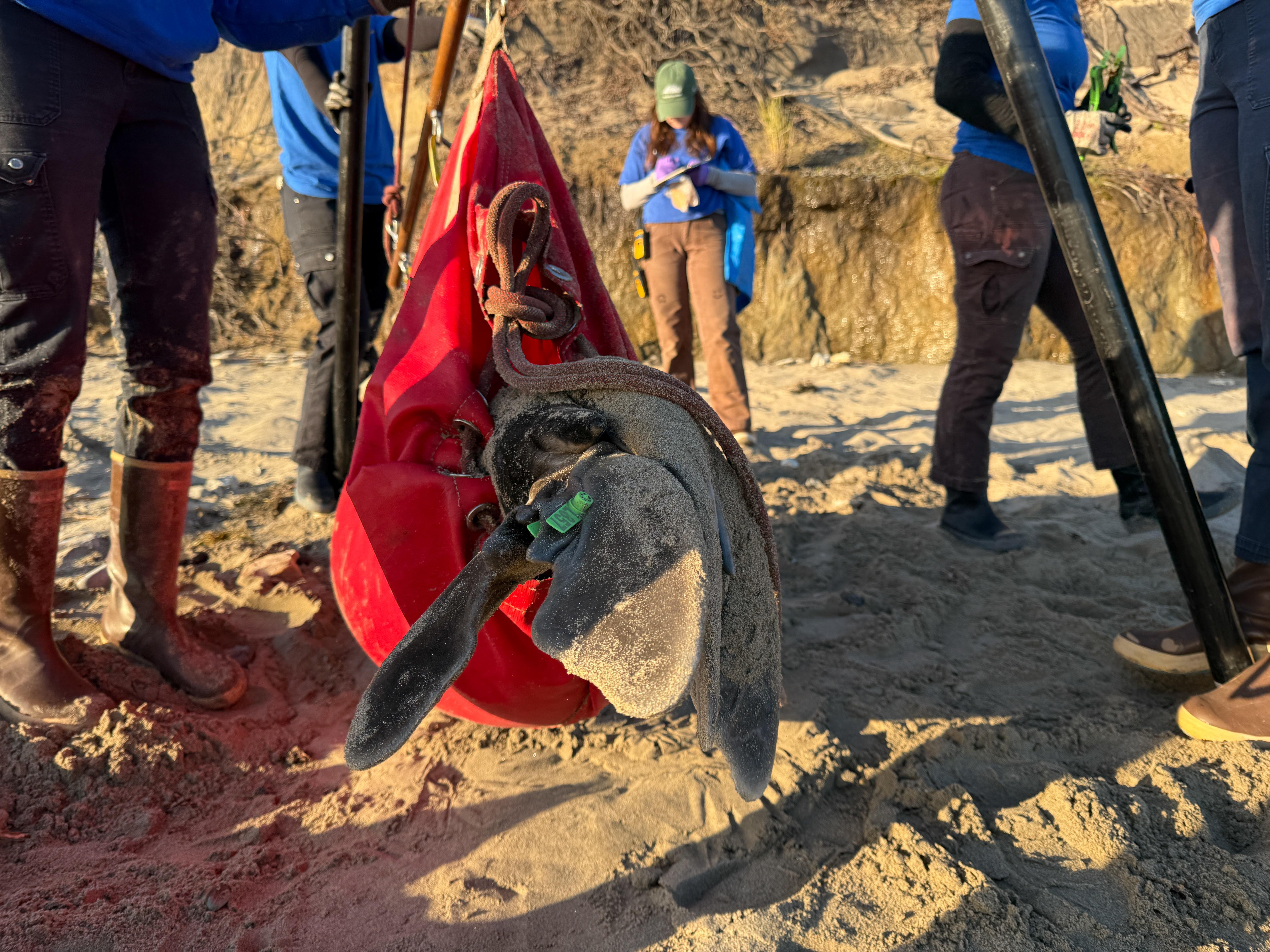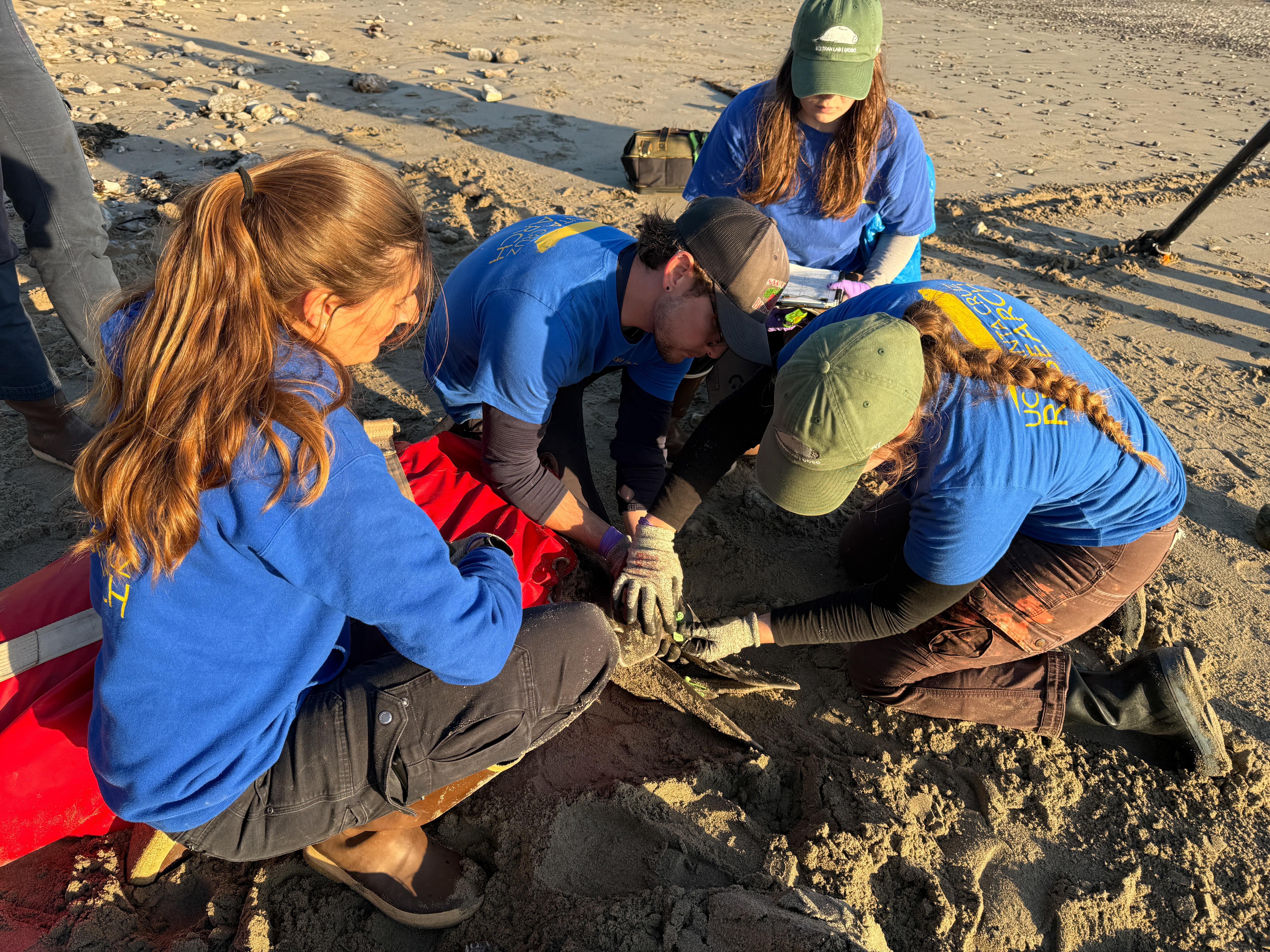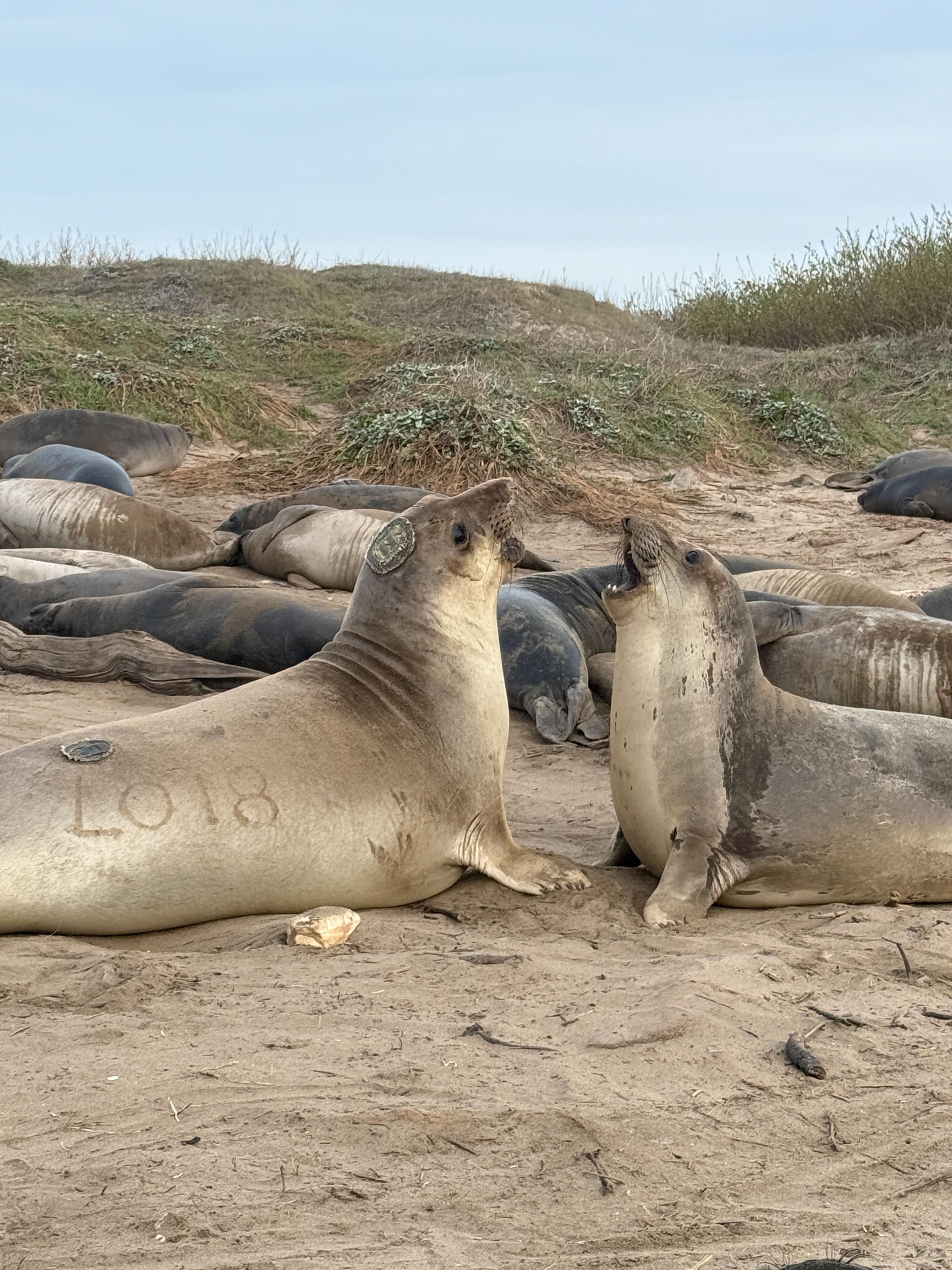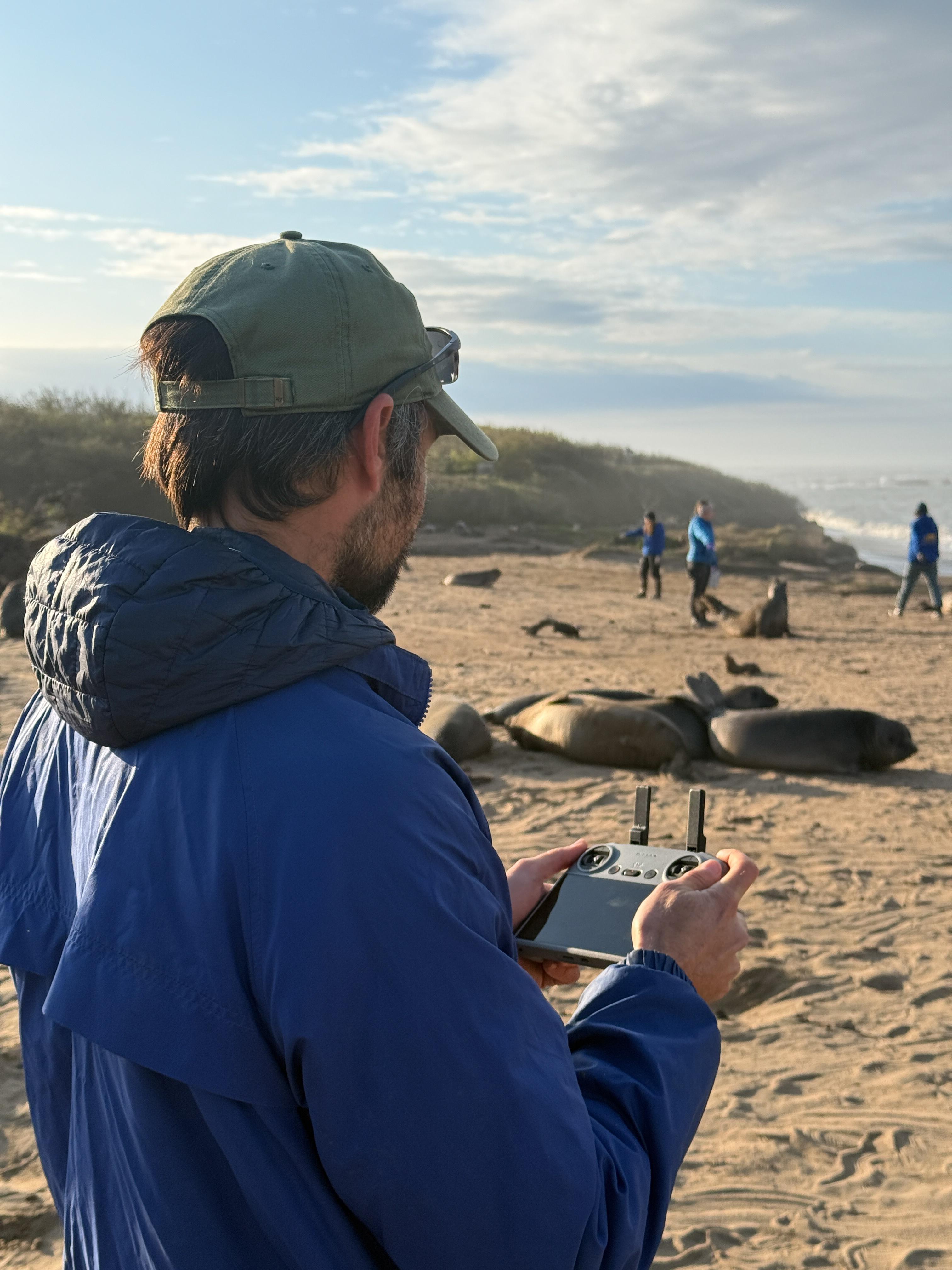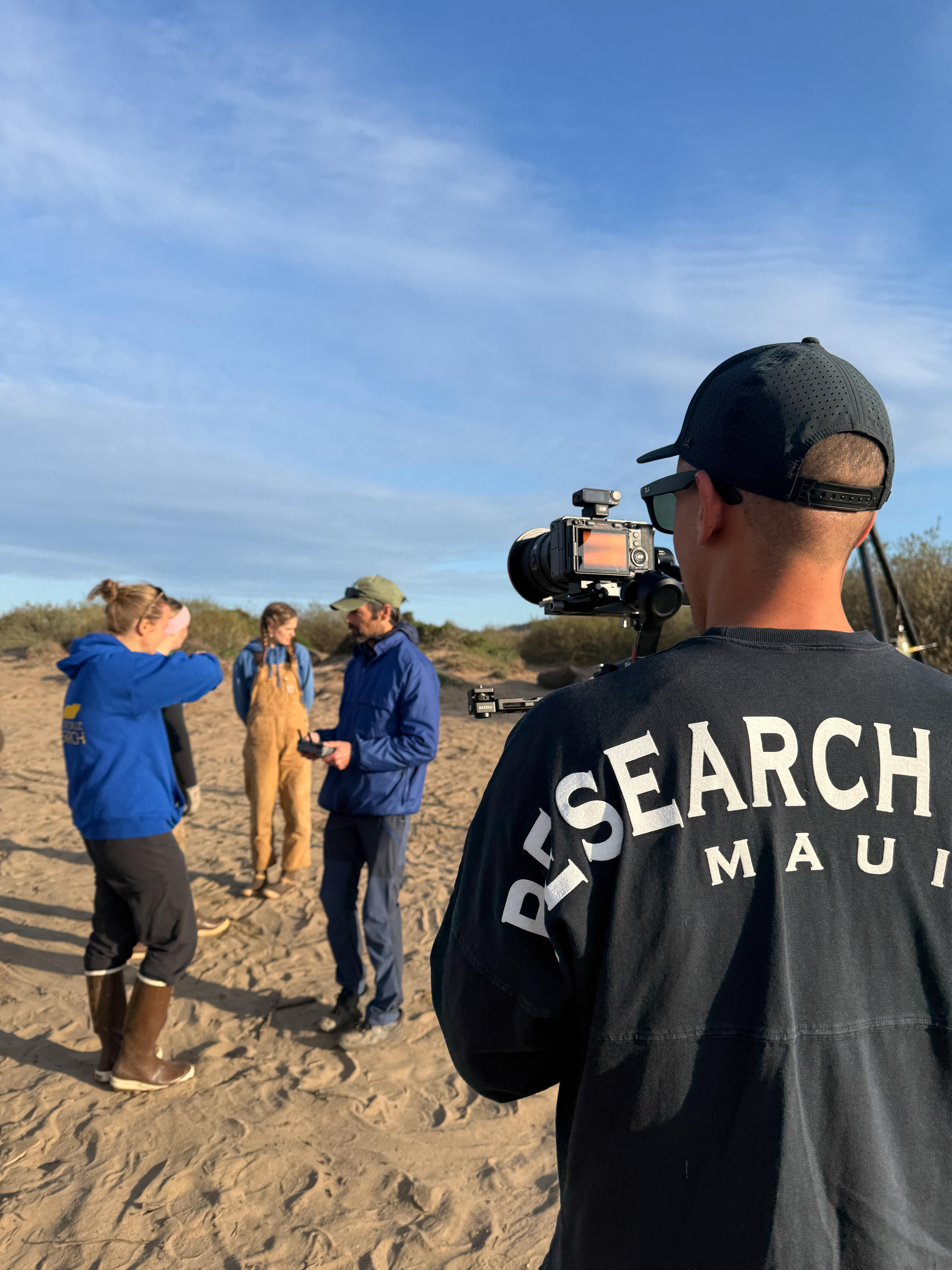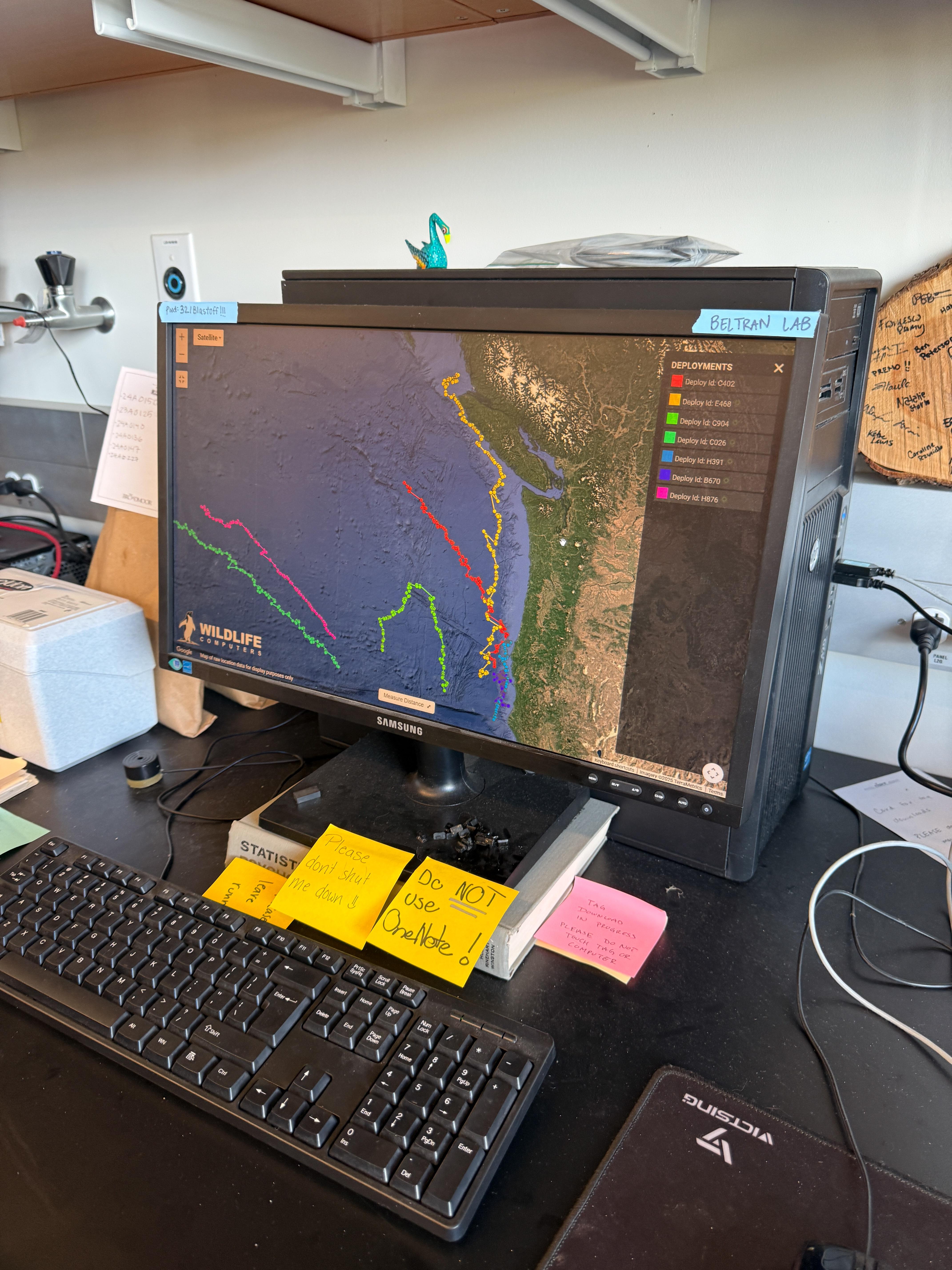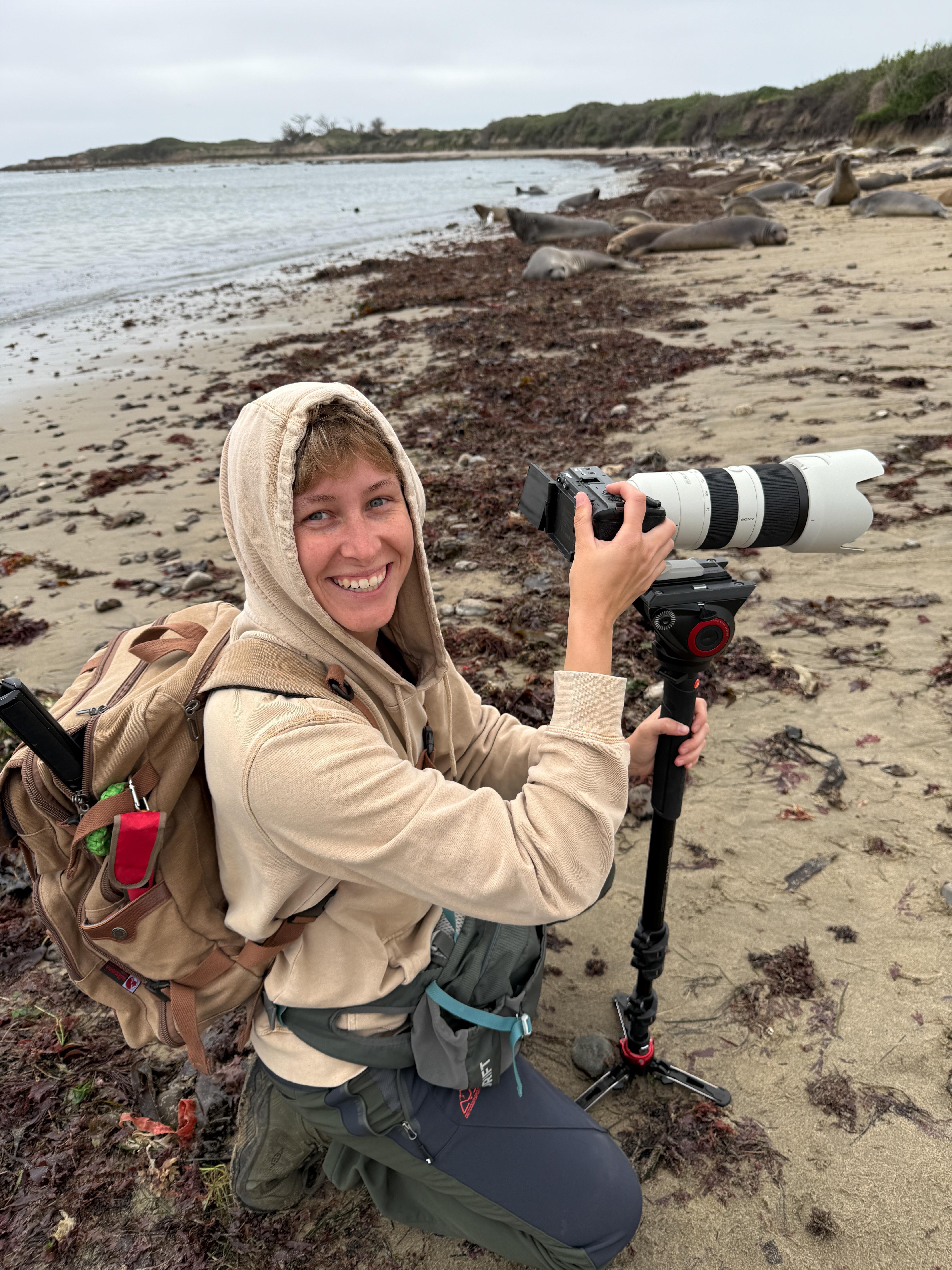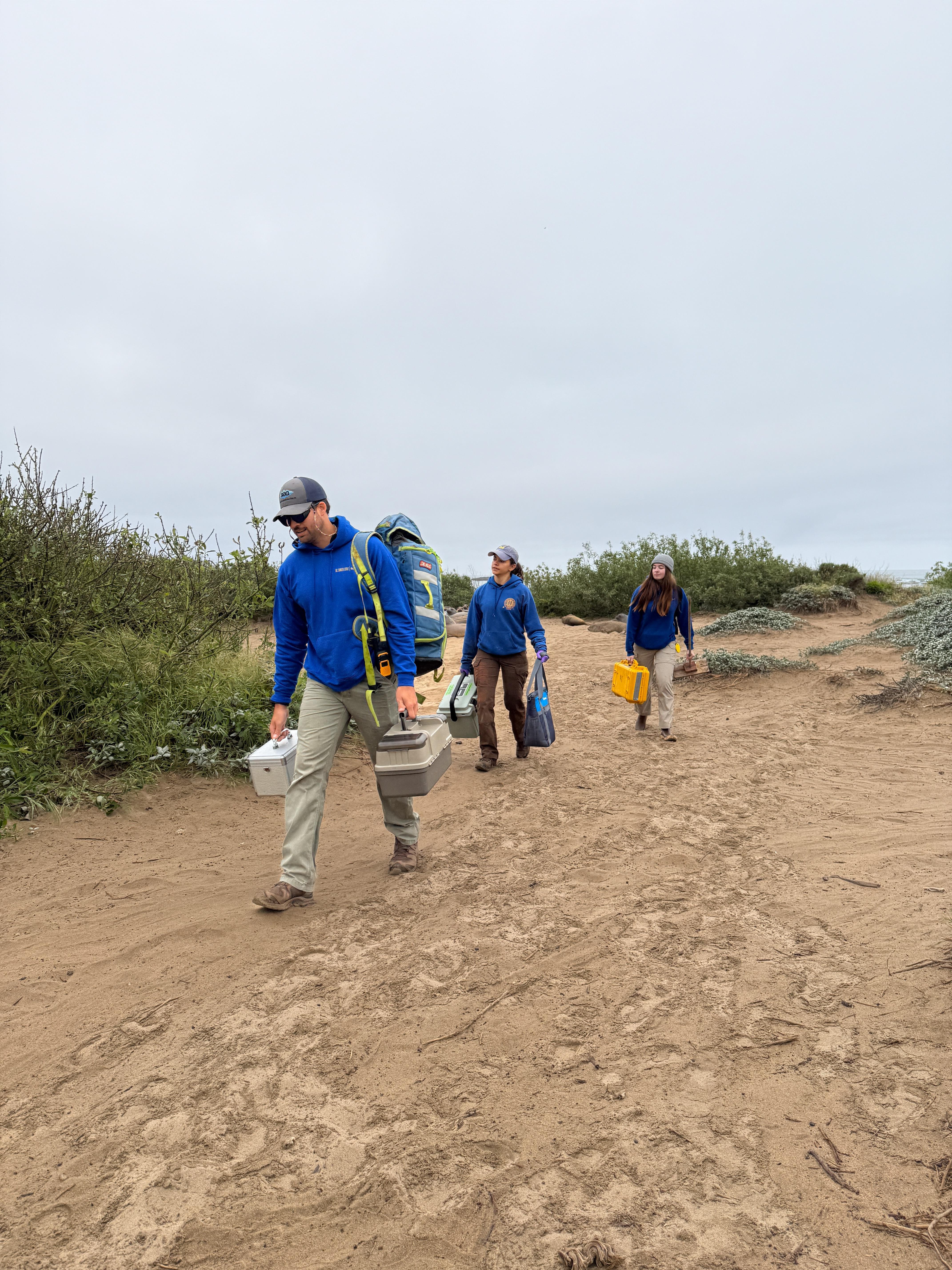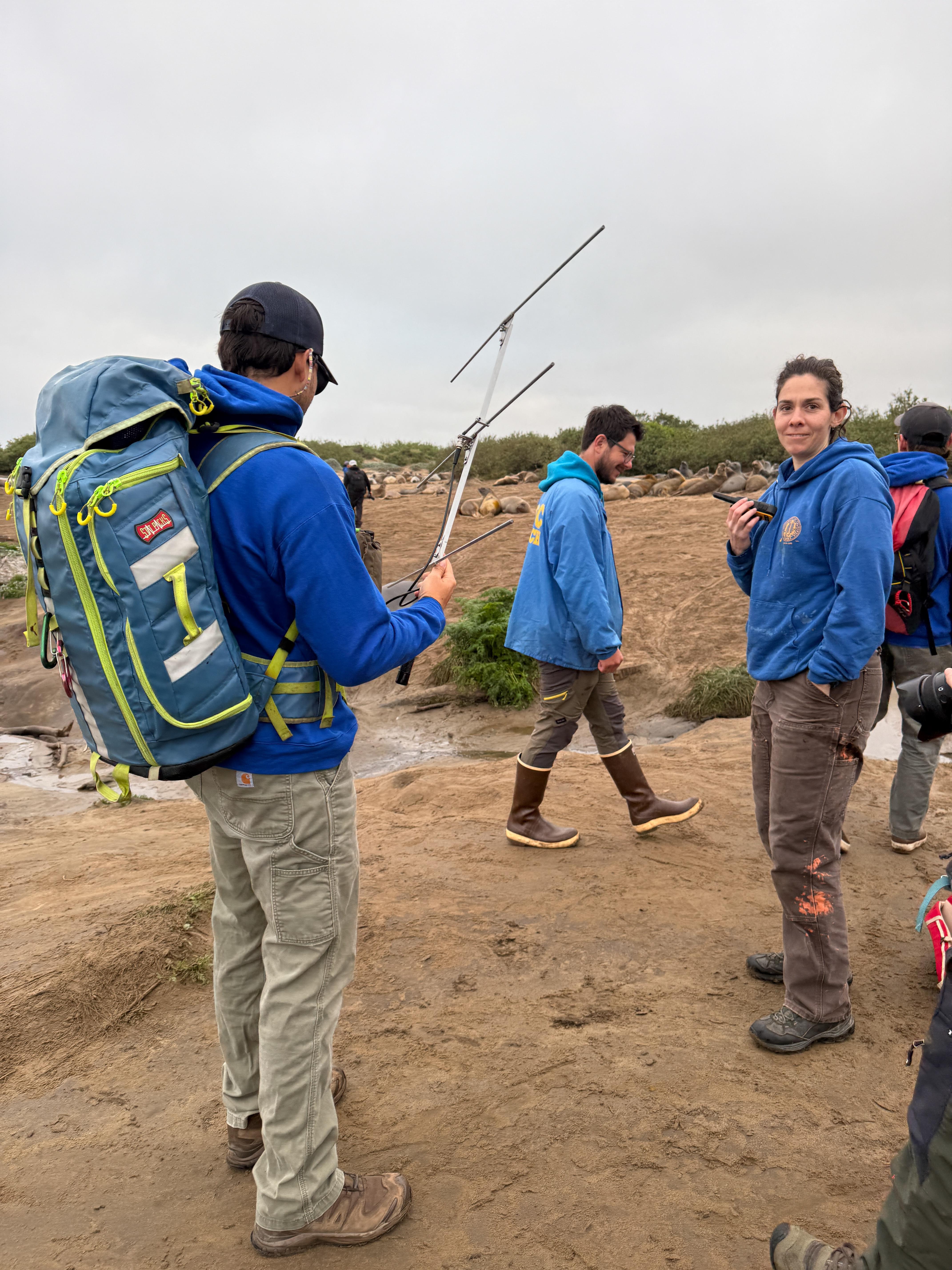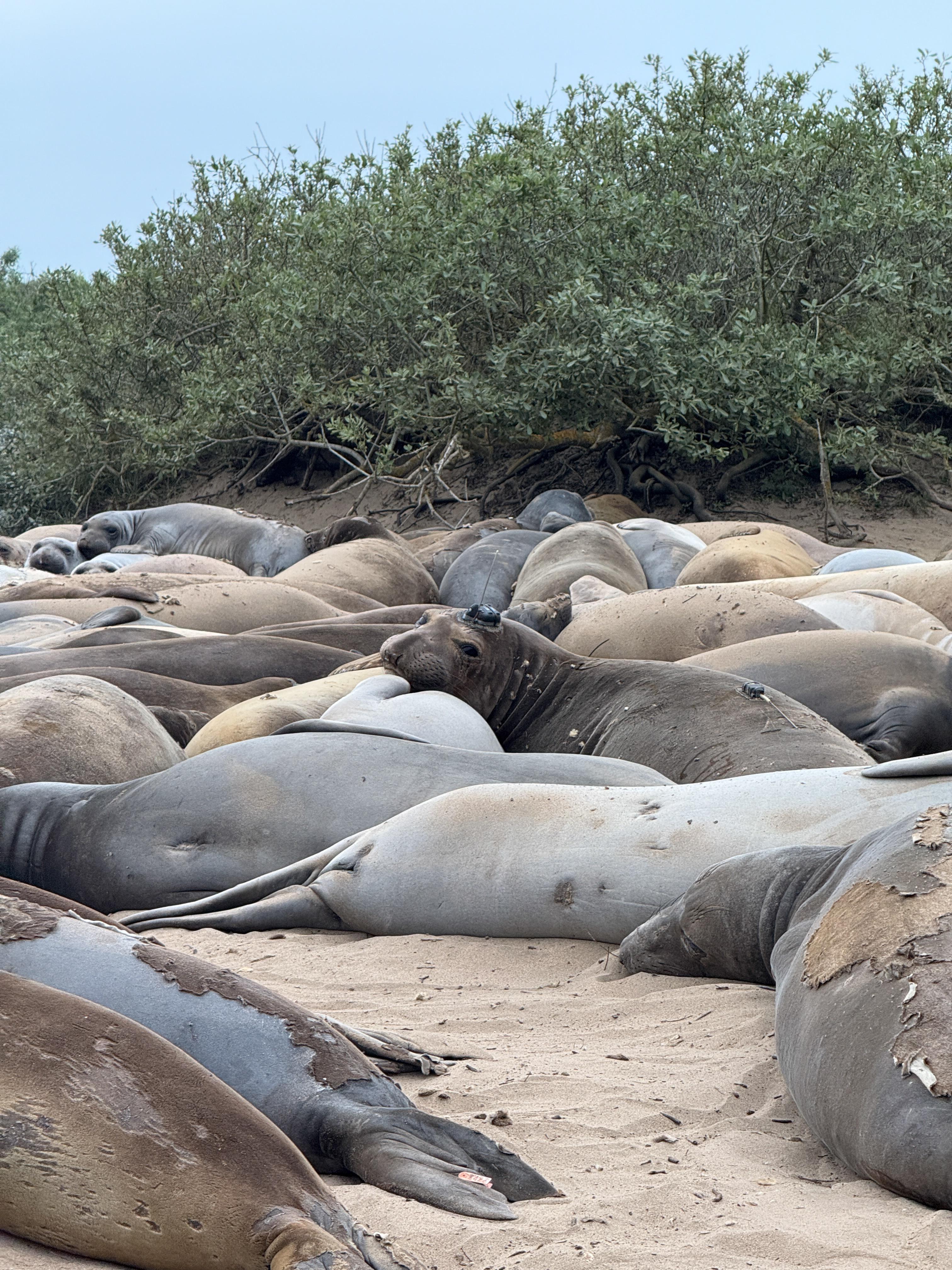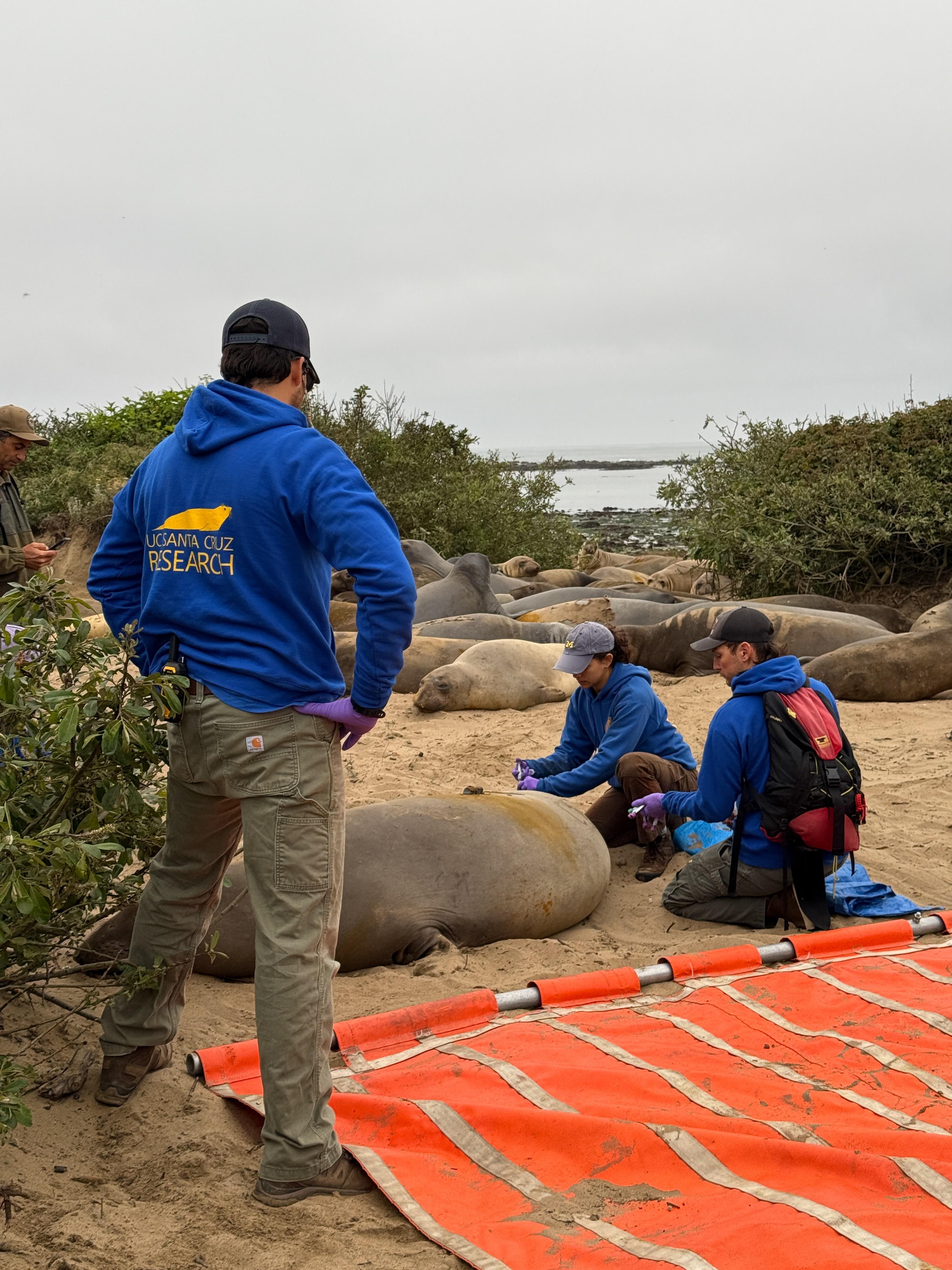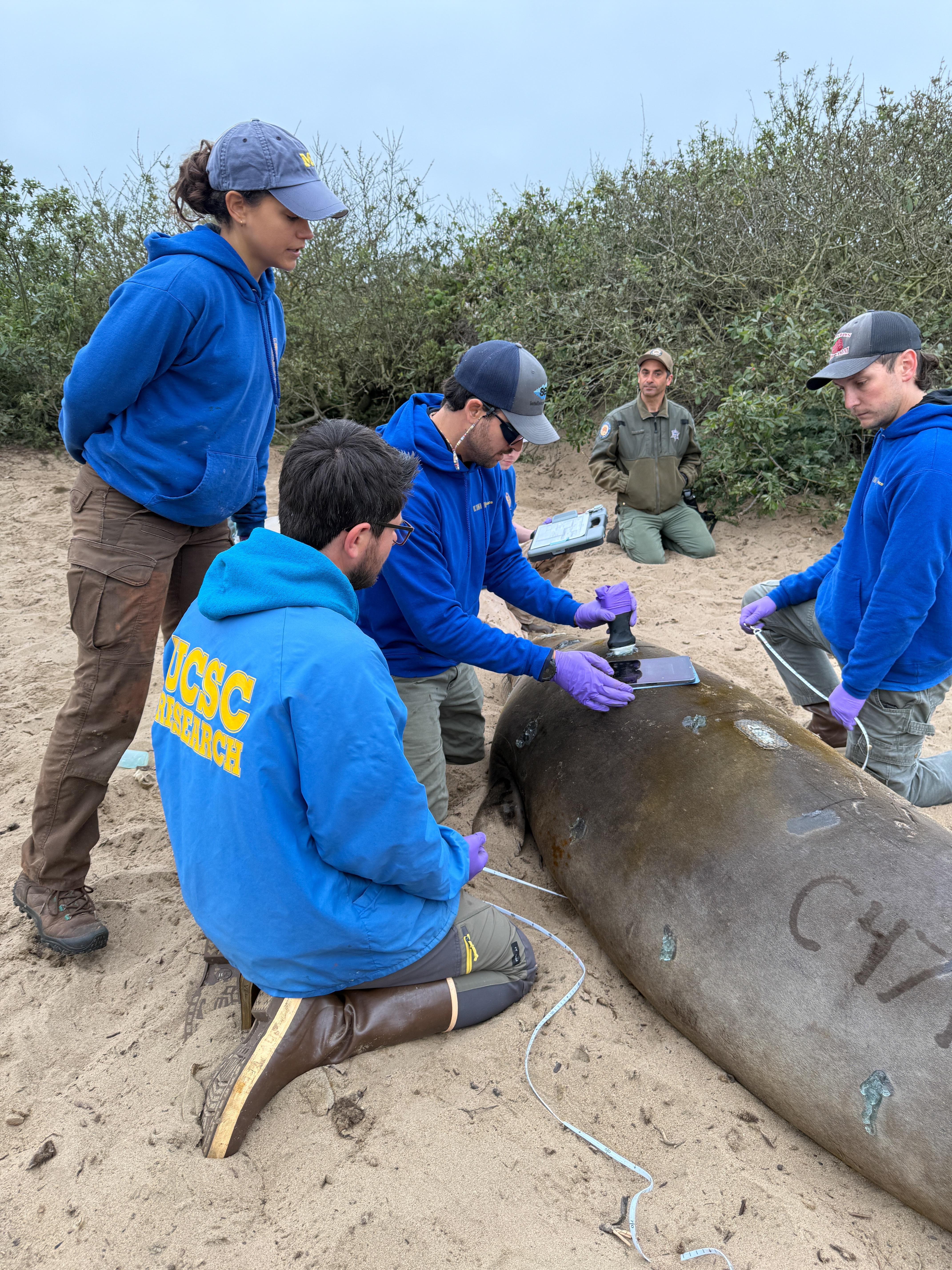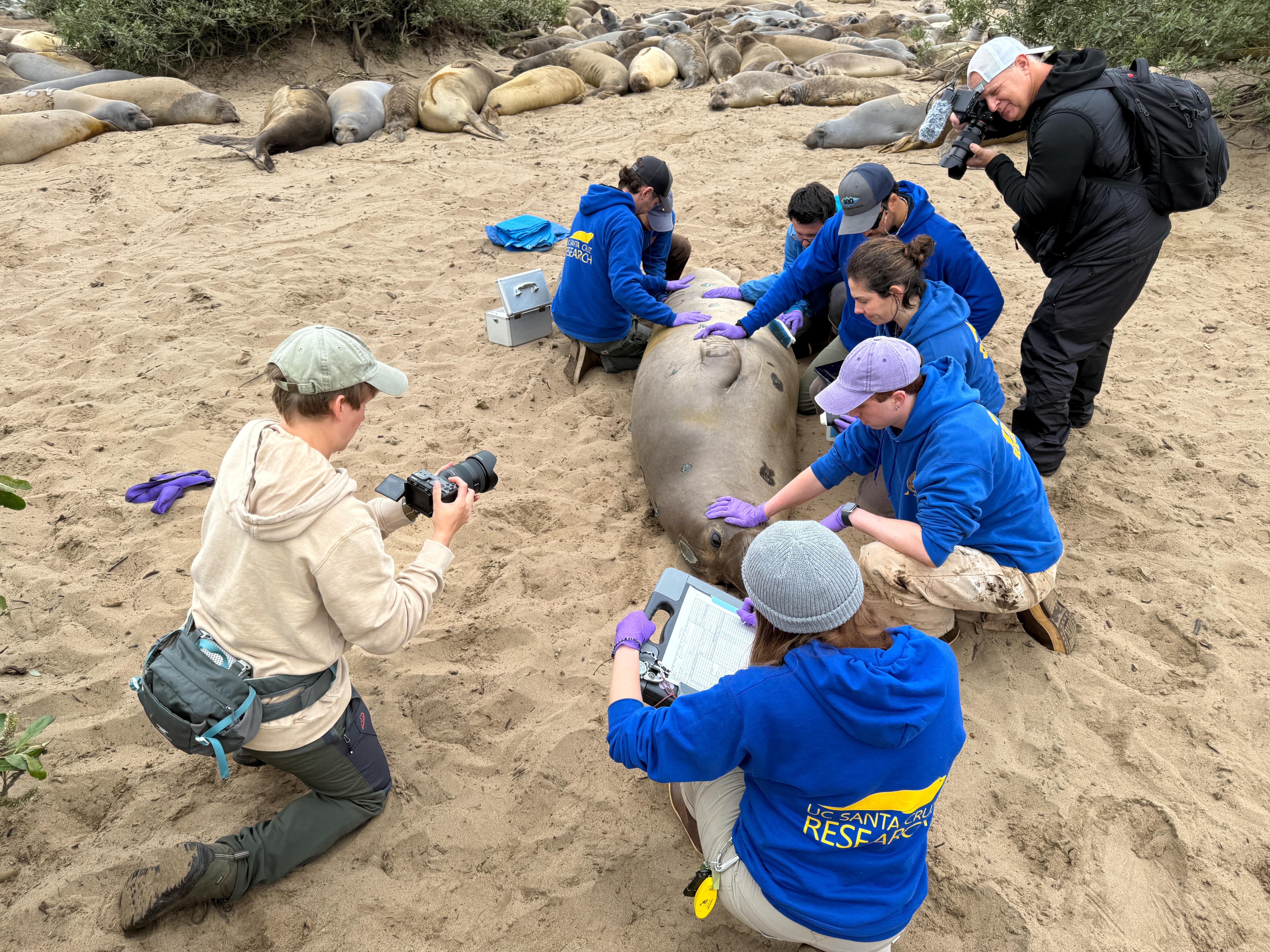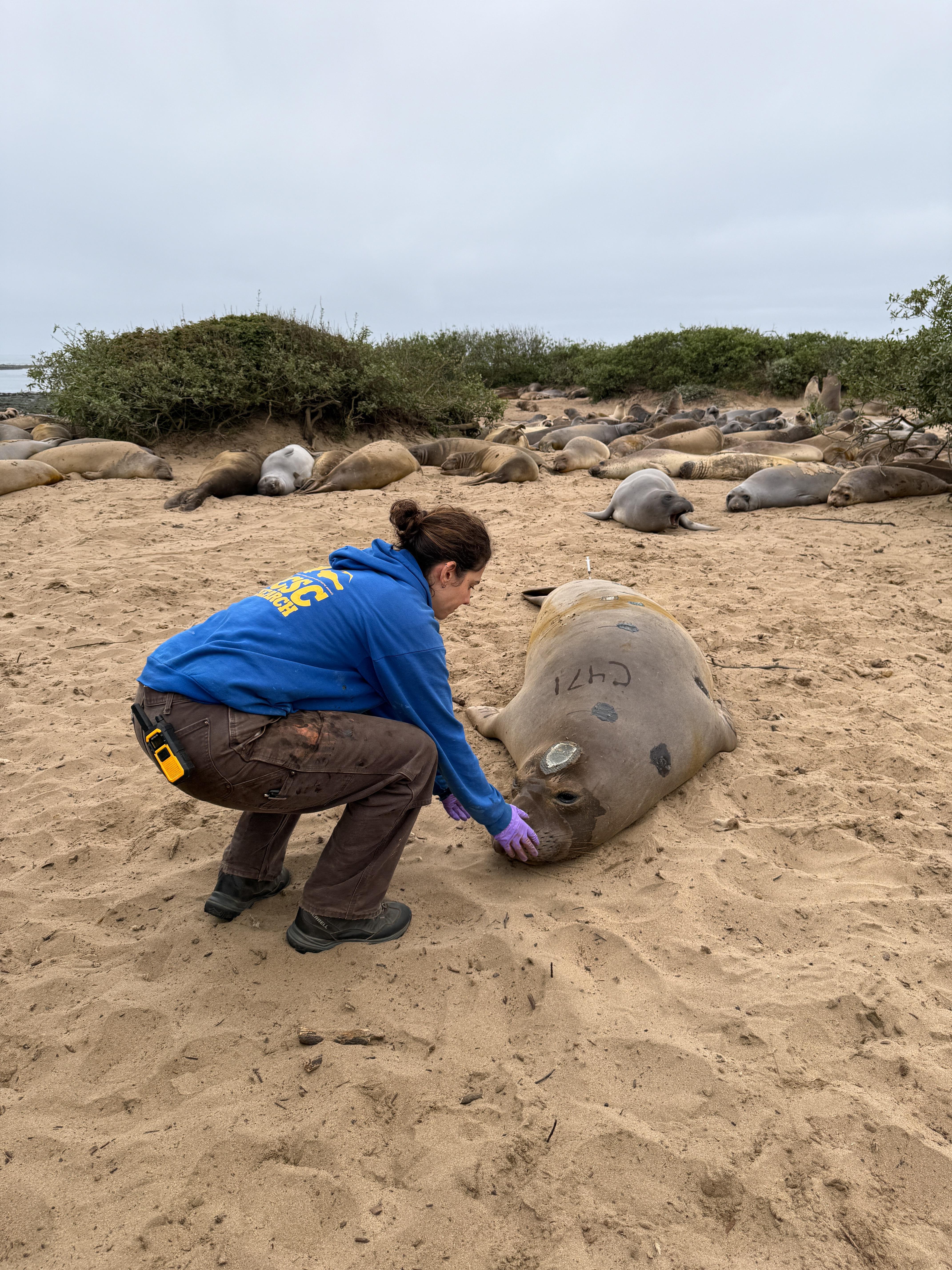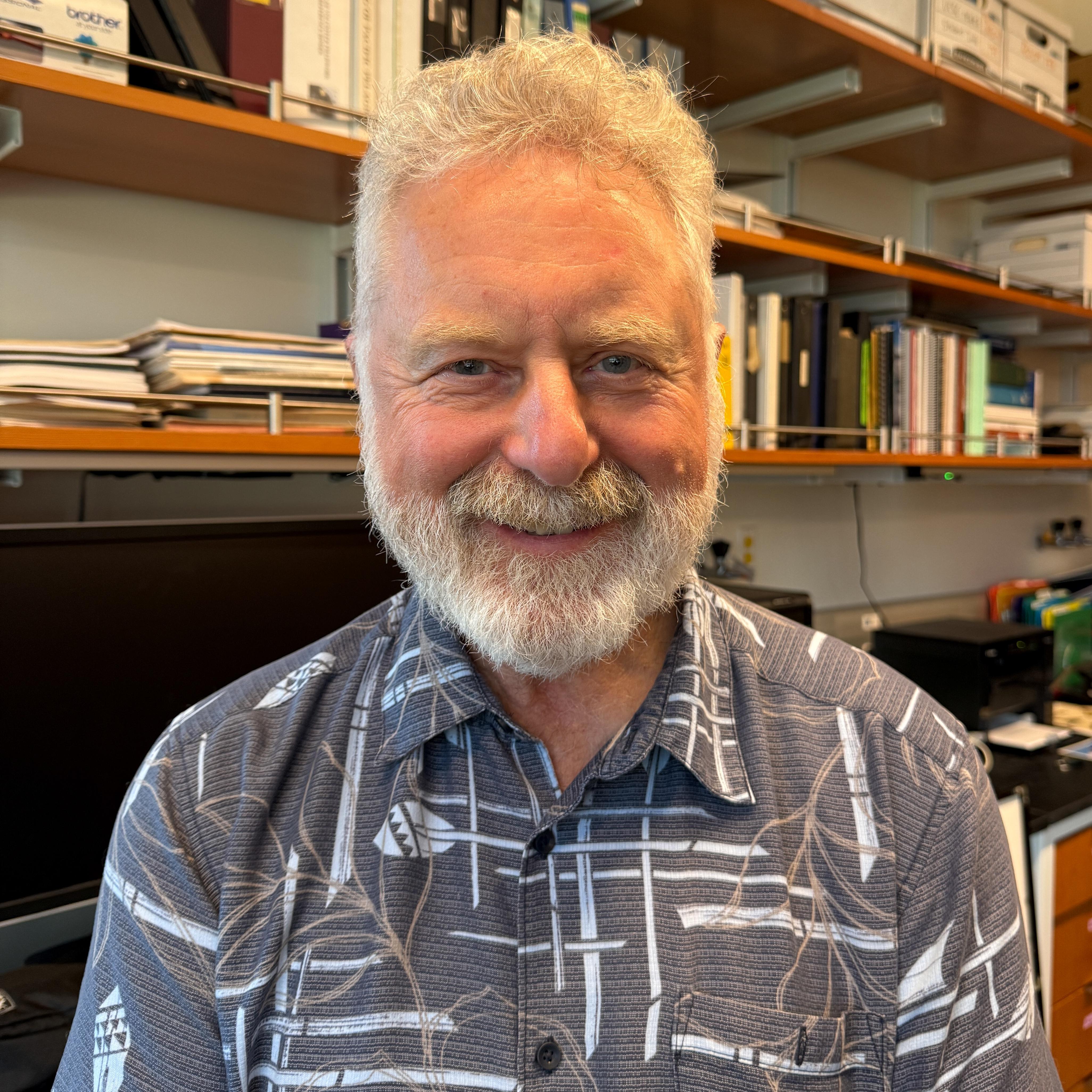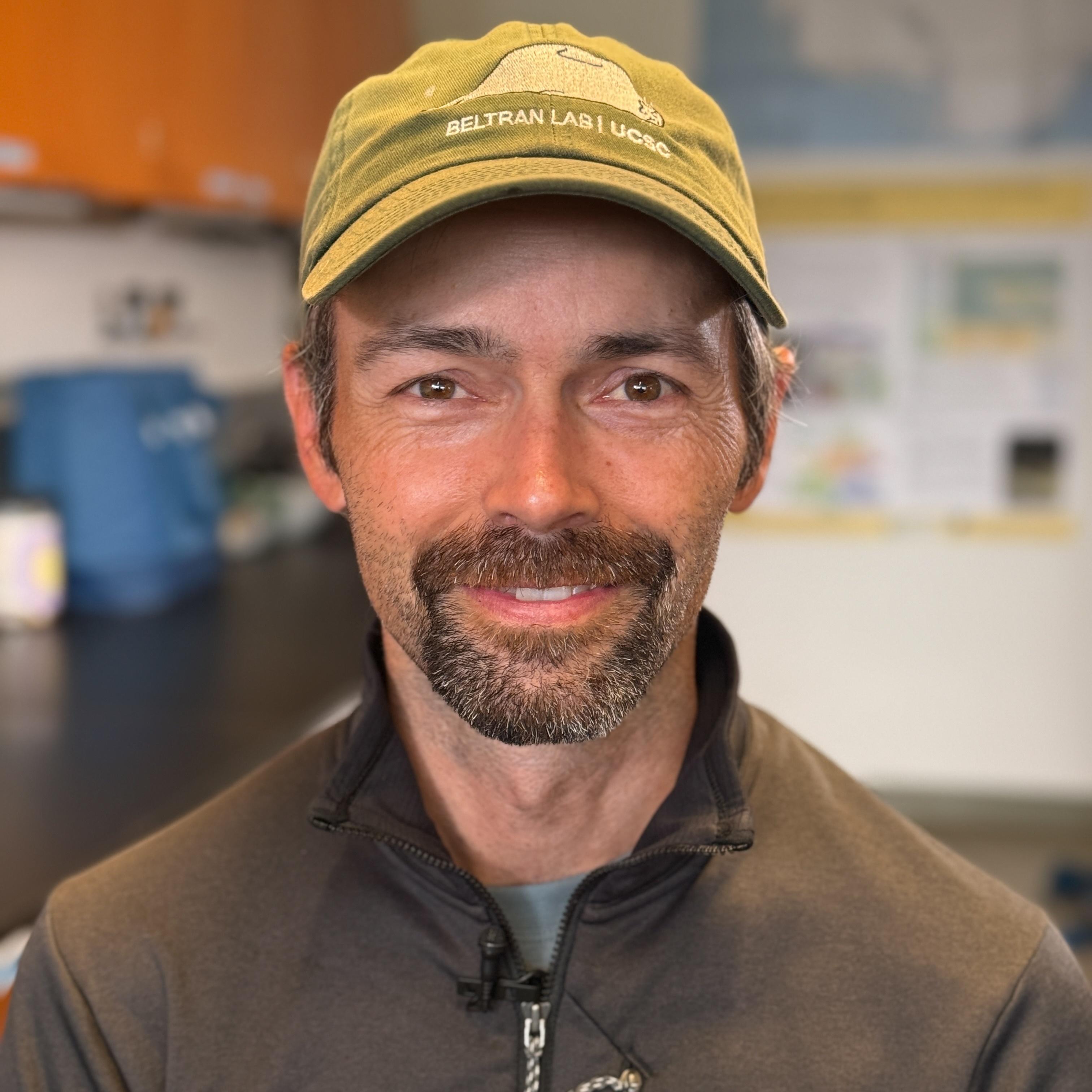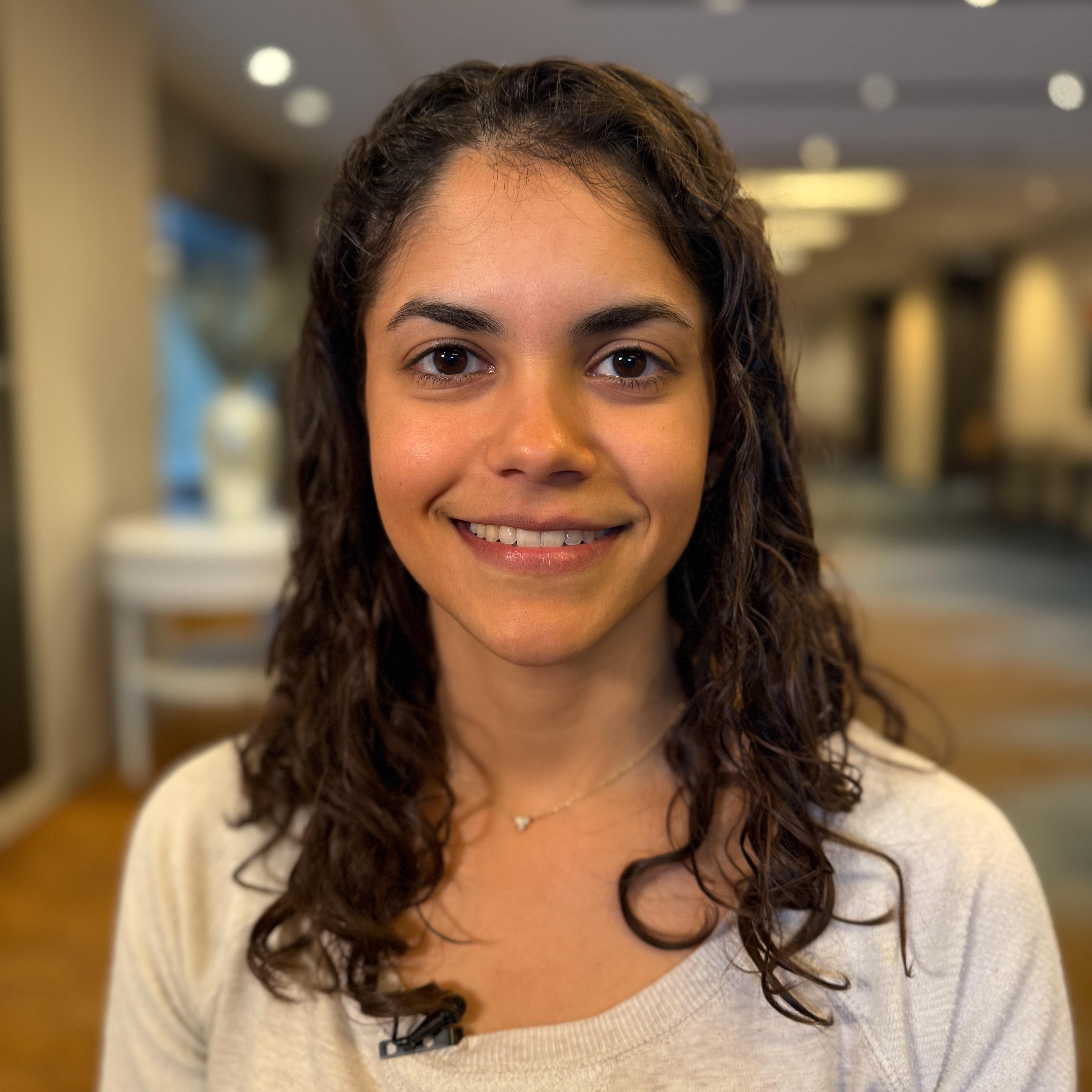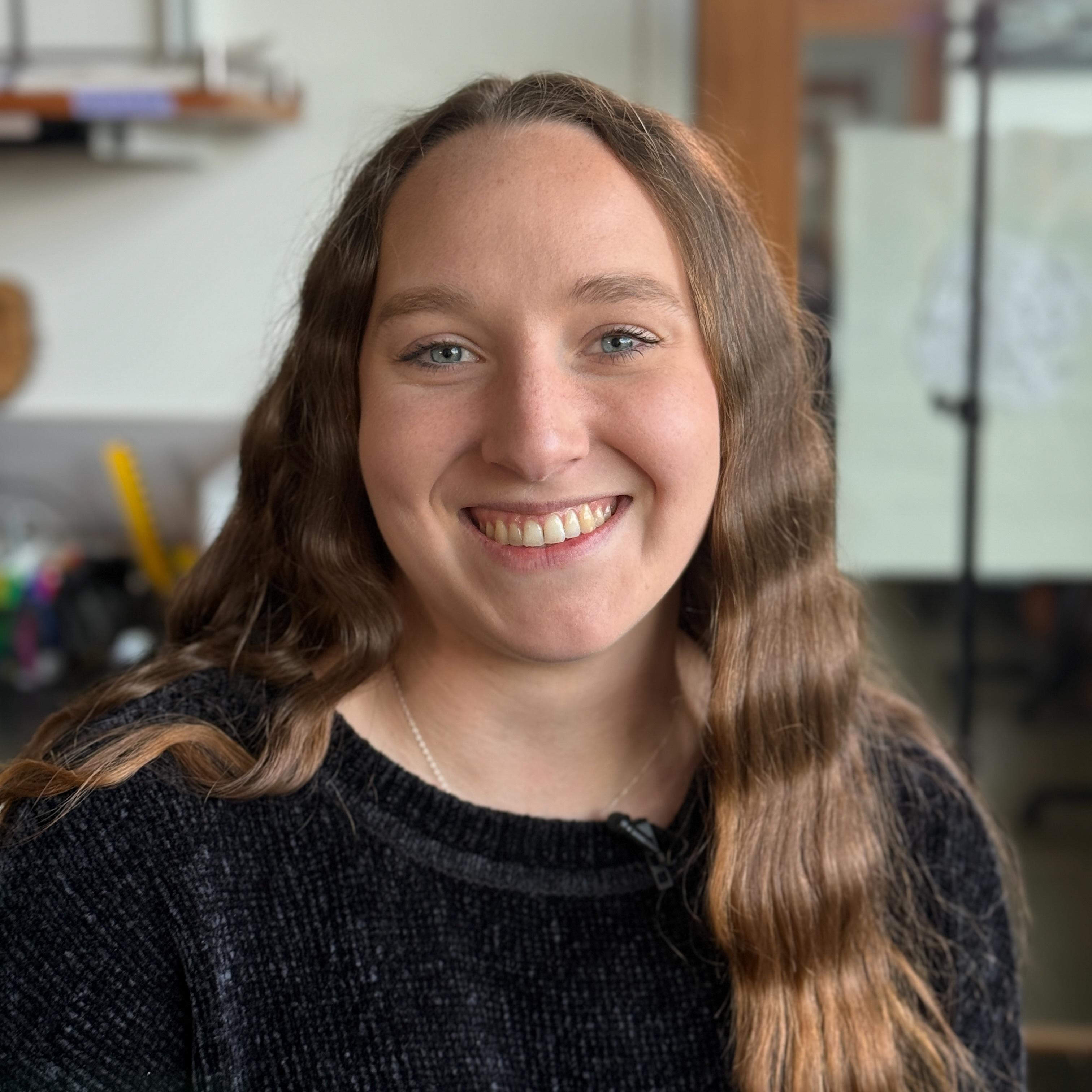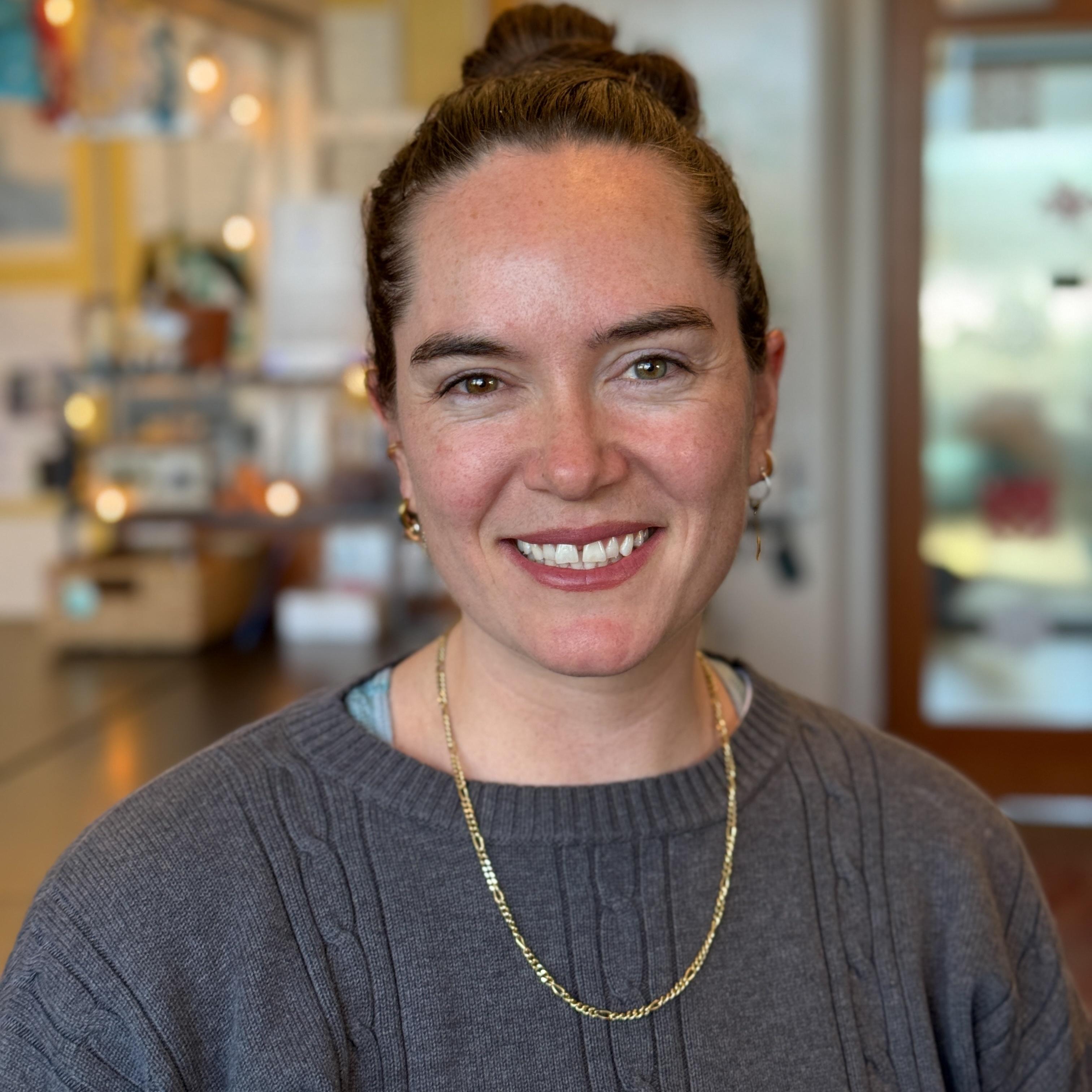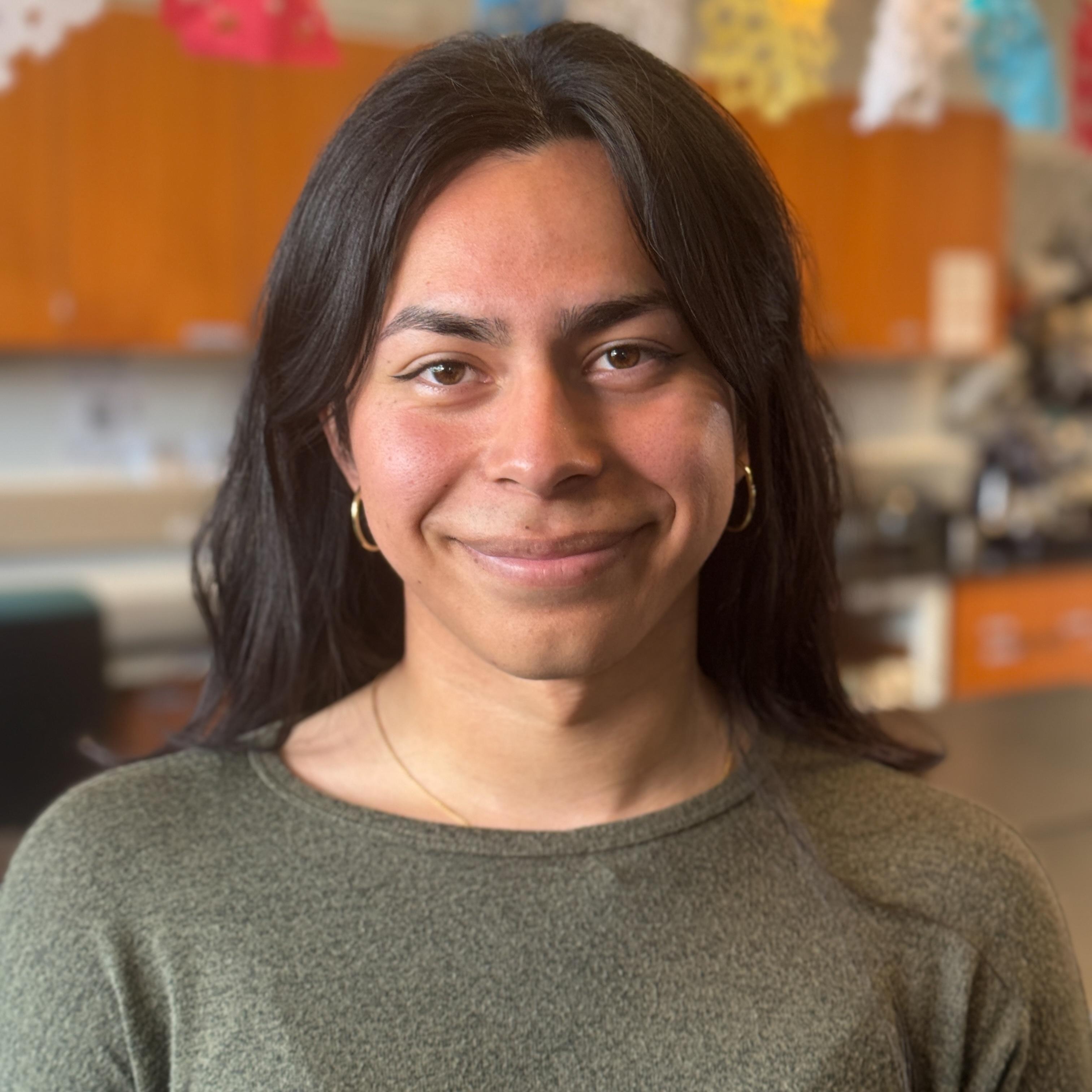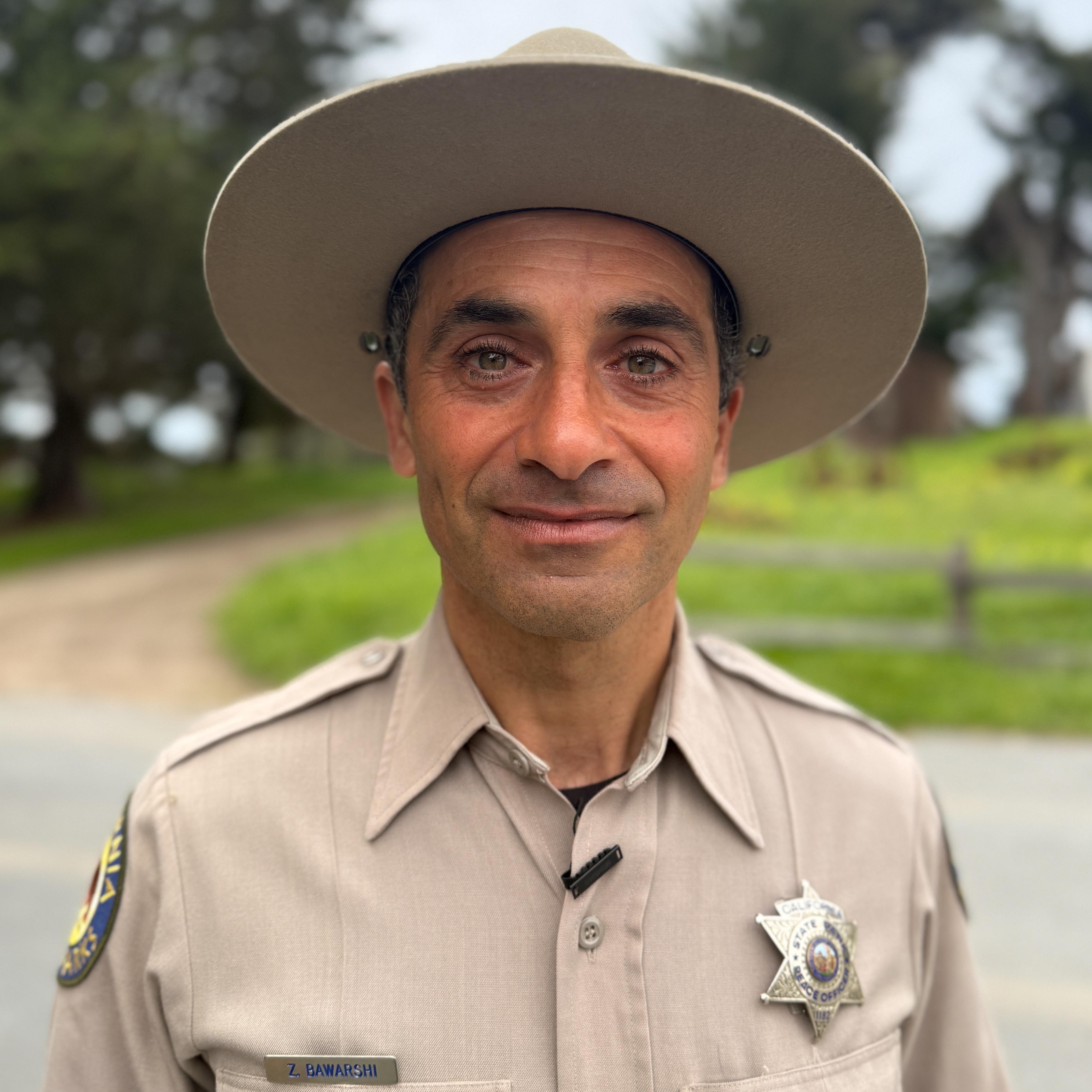Episode Photos
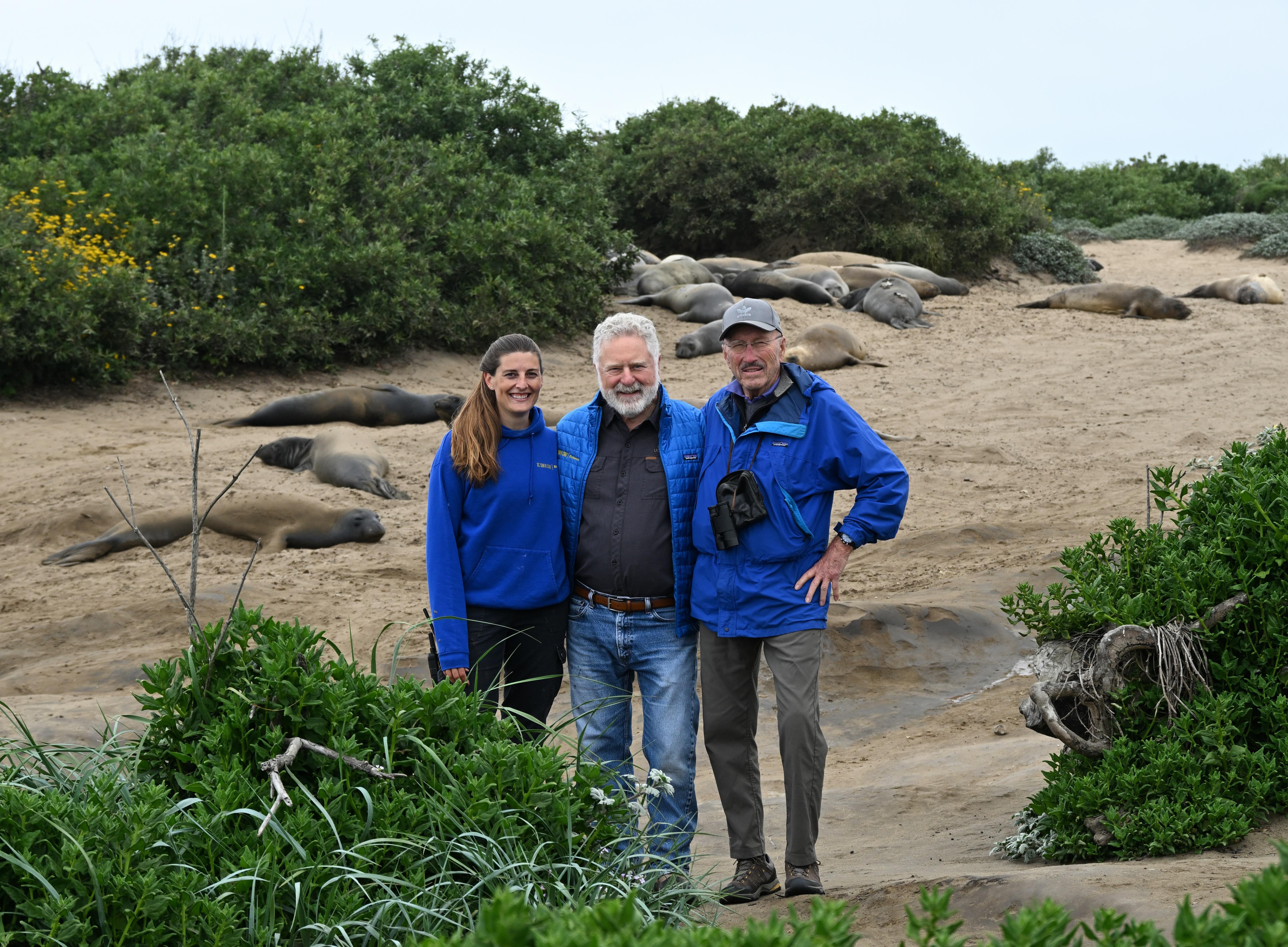
Patrick Robinson, Ph.D./UC Santa Cruz
Three generations of researchers have led the northern elephant seal research program at UC Santa Cruz: Roxanne Beltran, Ph.D.; Dan Costa, Ph.D.; and Burney Le Boeuf, Ph.D. Image taken under NMFS Permits #23188 & #19108.
Videographer David Diez films supervising Ranger Stan Kopacz. Año Nuevo State Park was established in 1958 and is run by the state of California.
State Park visitors can view the elephant seals, including 3000-4000-pound males, within a short walk of the visitor's center. Image taken under NMFS Permits #23188 & #19108.
In winter and spring, nearly 200 volunteer docents lead guided tours to visit the elephant seals on the beach.
Each winter, elephant seal pups are born on the beach where they nurse until their mother leaves for a short foraging migration. Image taken under NMFS Permits #23188 & #19108.
Every spring, researchers weigh 200 of the newly weaned pups. The weight of each weanling helps researchers understand how successful their mothers were at foraging while pregnant. Image taken under NMFS Permits #23188 & #19108.
Researchers handle the weanlings with great care so as not to cause stress to the pup or damage their developing flippers. Image taken under NMFS Permits #23188 & #19108.
During the weighing process, weanlings are also tagged for the research program at UCSC which tracks the elephant seals through generations of known mom-pup combinations. Image taken under NMFS Permits #23188 & #19108.
Two alpha-numeric flipper tags are affixed to help researchers identify the animals throughout their lives. Image taken under NMFS Permits #23188 & #19108.
In addition to flipper tags, researchers mark the seals with hair dye or bleach to identify them more easily from afar or through binoculars. Image taken under NMFS Permits #23188 & #19108.
These marks on the seals wear off over time as they molt, a process by which they replace their old fur coat each year. Image taken under NMFS Permits #23188 & #19108.
Ranger Stan Kopacz observes as researchers walk the beach to note the location of tagged elephant seals. Image taken under NMFS Permits #23188 & #19108.
Año Nuevo Reserve Director Patrick Robinson flies a drone overhead while the field team points at specific seals to mark. Researchers are working on ways to measure seal weights from above to "weigh" the whole colony at once. Image taken under NMFS Permits #23188 & #19108.
Videographer David Diez films the research team as they collect individual data on seals to support the drone weighing process.
Director of Photography & Editor Sean Hickey films a group of elephant seals playing in the surf at Año Nuevo State Park. Image taken under NMFS Permits #23188 & #19108.
Researchers work with approximately 40 seals per year to affix satellite tags and other ocean observing bio-loggers. That allows them to track the seals while the animals are at sea.
Professor Roxanne Beltran measures the elephant seals' tracks to determine when they will be returning to the beach at Año Nuevo so their tags and the data can be collected.
Back at Año Nuevo, Videographer Nova West films the female elephant seals that have returned from their short foraging migration. Image taken under NMFS Permits #23188 & #19108.
The female elephant seals come back en mass in May and early June to fast on the beach until it is time to leave for their long foraging migration. Image taken under NMFS Permits #23188 & #19108.
When researchers have a satellite tagged seal return to the beach, they head out to find the seal and recover the tag and any bio-loggers the seal is carrying. Image taken under NMFS Permits #23188 & #19108.
Using a radio receiver, researchers are able to pick up signals from the radio tag on the elephant seal to determine its precise location on the beach. Image taken under NMFS Permits #23188 & #19108.
The tagged seal is found amongst a large gathering in the upper sand dunes. Image taken under NMFS Permits #23188 & #19108.
Once located and isolated from other seals, the tagged seal is carefully sedated and monitored by researchers. Image taken under NMFS Permits #23188 & #19108.
Researchers measure the seal's girth and length and also use a handheld ultrasound to measure blubber depth. Image taken under NMFS Permits #23188 & #19108.
Videographer Nova West and Director of Photography Sean Hickey film as the research team takes great care to manage the sedated elephant seal as measurements are taken. Image taken under NMFS Permits #23188 & #19108.
Post-doctoral Researcher Arina Favilla, Ph.D. removes the satellite tag, leaving only a patch of dried epoxy which will molt off the seal, leaving no mark of the tag she carried out at sea. Image taken under NMFS Permits #23188 & #19108.
During the tag recovery process, the elephant seal is also carefully weighed in order to compare figures with her previous mass before her foraging trip. Image taken under NMFS Permits #23188 & #19108.
Research Scientist Rachel Holser, Ph.D. checks the sedated elephant seal's awareness level once the recovery process is completed. Seals are not left until they are fully awake and aware. Image taken under NMFS Permits #23188 & #19108.

